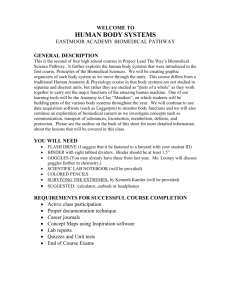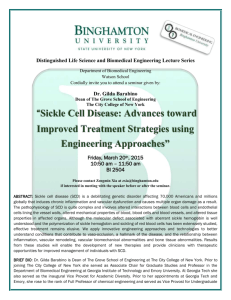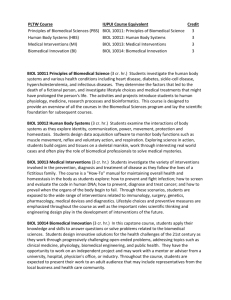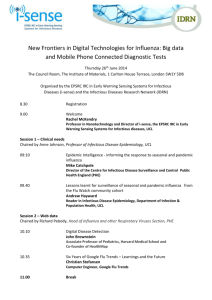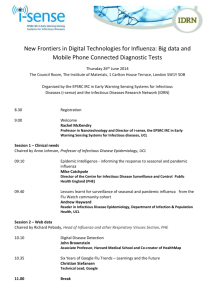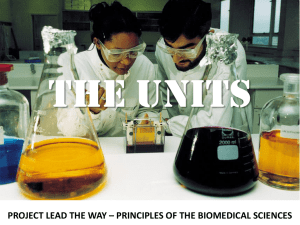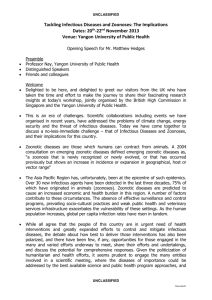Golden Strip CAREER CENTER COURSE SYLLABUS Lee Anne
advertisement
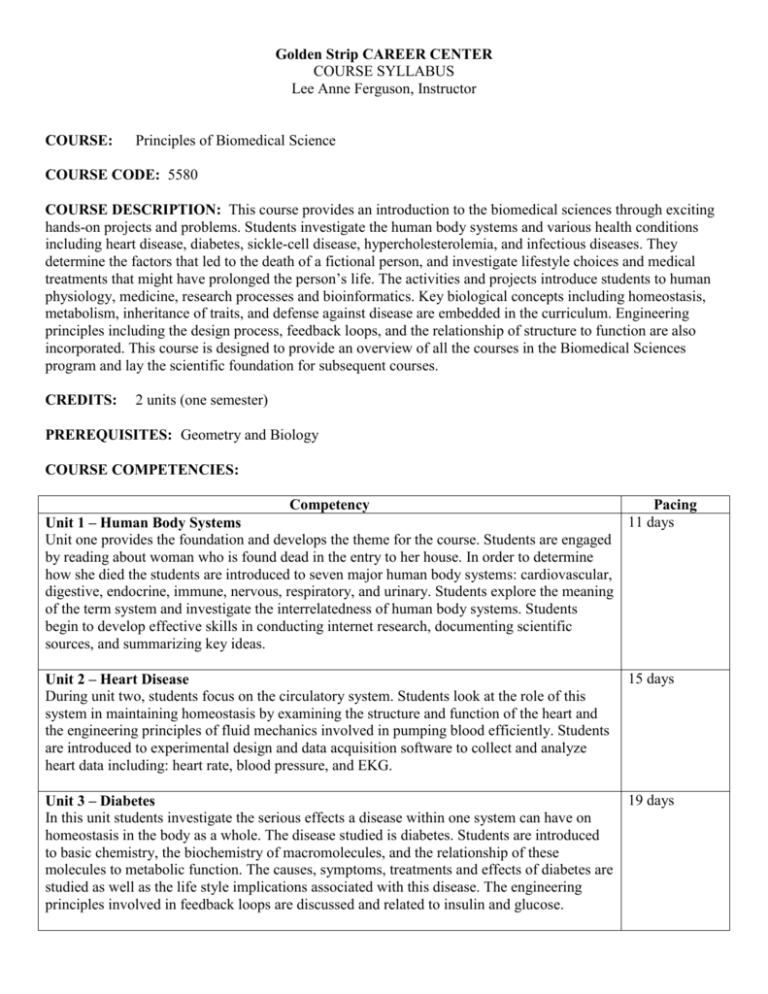
Golden Strip CAREER CENTER COURSE SYLLABUS Lee Anne Ferguson, Instructor COURSE: Principles of Biomedical Science COURSE CODE: 5580 COURSE DESCRIPTION: This course provides an introduction to the biomedical sciences through exciting hands-on projects and problems. Students investigate the human body systems and various health conditions including heart disease, diabetes, sickle-cell disease, hypercholesterolemia, and infectious diseases. They determine the factors that led to the death of a fictional person, and investigate lifestyle choices and medical treatments that might have prolonged the person’s life. The activities and projects introduce students to human physiology, medicine, research processes and bioinformatics. Key biological concepts including homeostasis, metabolism, inheritance of traits, and defense against disease are embedded in the curriculum. Engineering principles including the design process, feedback loops, and the relationship of structure to function are also incorporated. This course is designed to provide an overview of all the courses in the Biomedical Sciences program and lay the scientific foundation for subsequent courses. CREDITS: 2 units (one semester) PREREQUISITES: Geometry and Biology COURSE COMPETENCIES: Competency Unit 1 – Human Body Systems Unit one provides the foundation and develops the theme for the course. Students are engaged by reading about woman who is found dead in the entry to her house. In order to determine how she died the students are introduced to seven major human body systems: cardiovascular, digestive, endocrine, immune, nervous, respiratory, and urinary. Students explore the meaning of the term system and investigate the interrelatedness of human body systems. Students begin to develop effective skills in conducting internet research, documenting scientific sources, and summarizing key ideas. Unit 2 – Heart Disease During unit two, students focus on the circulatory system. Students look at the role of this system in maintaining homeostasis by examining the structure and function of the heart and the engineering principles of fluid mechanics involved in pumping blood efficiently. Students are introduced to experimental design and data acquisition software to collect and analyze heart data including: heart rate, blood pressure, and EKG. Pacing 11 days 15 days 19 days Unit 3 – Diabetes In this unit students investigate the serious effects a disease within one system can have on homeostasis in the body as a whole. The disease studied is diabetes. Students are introduced to basic chemistry, the biochemistry of macromolecules, and the relationship of these molecules to metabolic function. The causes, symptoms, treatments and effects of diabetes are studied as well as the life style implications associated with this disease. The engineering principles involved in feedback loops are discussed and related to insulin and glucose. Unit 4 – Sickle Cell Disease Genetics is the focus of this unit which uses Sickle Cell Disease as a tool to gain an understanding of the inheritance of traits. Students are introduced to bioinformatics as they explore the role of genes in determining the structure and function of proteins. Students build models of DNA and the beta-globin protein as they study the structure, function, and interrelatedness of nucleic acids and proteins. To study the impact of mutations they analyze karyotypes and explore the effects of single base-pair mutations. 17 days 6 days Unit 5 – Hypercholesterolemia In unit 5, students look at the function of cholesterol in the body and its role in heart disease. DNA technologies including polymerase chain reaction (PCR), restriction fragment length polymorphism (RFLP) analysis, and DNA electrophoresis are introduced as students complete activities dealing with the familial hypercholesterolemia gene. Unit 6 – Infectious Diseases Bacteria and viruses, the causative agents of infectious diseases, are the focus of unit six. Structural differences between these organisms are examined as students Gram stain bacteria and produce models of virus particles. The differences in treatment protocols for bacterial and viral diseases are investigated. Students produce a public health campaign to educate peers about the dangers and the prevention of an infectious disease. 10 days Unit 7 – Medical Interventions Medical interventions past and present are explored in this unit including surgery, medication, technology, and life style choice. The focus of the work is how medical interventions have changed over time to prolong and improve the quality of life. Students explore how a new pharmaceutical treatment goes from initial discovery to market, and research medical interventions currently available for common diseases or disorders including heart disease, sickle cell disease, hypercholesterolemia, and infectious diseases. The connections between engineering and biomedical sciences are introduced as students explore the design and development of various medical devices including prosthetics, artificial skin, insulin pumps, joint replacements, and heart pacemakers. 7 days Unit 8 – Grant Proposal Funding medical research through the grant writing process is the focus of unit eight. In teams, students prepare a written grant proposal and give an oral presentation supporting the proposal, based on a disease topic of their choice. The grant proposal is based on a National Institutes of Health grant structure. This is an in-depth research project completed over a lengthy period of time. The final proposal is presented to a Grant Evaluation Committee consisting of community members employed in medical, healthcare, education, or business professions. 5 days COURSE EVALUATION: Nine Weeks Grade: 60% Major 40% Minor Grading Scale: A = 93 – 100 2 B = 85 – 92 C = 76 – 84 D = 70 – 75 F = 69 - Below 3
